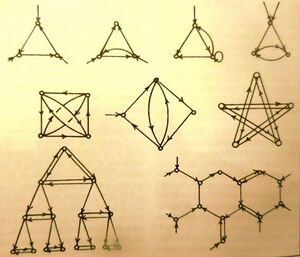STRUCTURES of a SYSTEM (Basic)
| Collection | International Encyclopedia of Systems and Cybernetics |
|---|---|
| Year | 2004 |
| Vol. (num.) | 2(2) |
| ID | ◀ 3247 ▶ |
| Object type | Methodology or model |

J.de ROSNAY enumerates thus the basic structures of any system:
“- Elements or components, that can be counted and assembled into categories, families or populations: molecules, cells, inhabitants, machines, goods
- A limit, that defines the borders of the systems and separates it from the external world: membranes, the hide, the borders of a country
- Stores into which elements can be collected and wherein energy, information or matter may be kept: organs, tanks, computer memories, libraries, films
- A communication net, that permits exchanges of energy, information or matter among the systems elements or stores: nerves, arteries, roads, canals, cables, pipelines, etc…“ (1990, p.98-9).
There are generally different kinds of elements, subsystems, stores and communication nets in a system. (Elements can constitute ordered subsystems of different types).
As to the limit, or border, it is as much an exchange structure as a separator.
See also
figure page 566